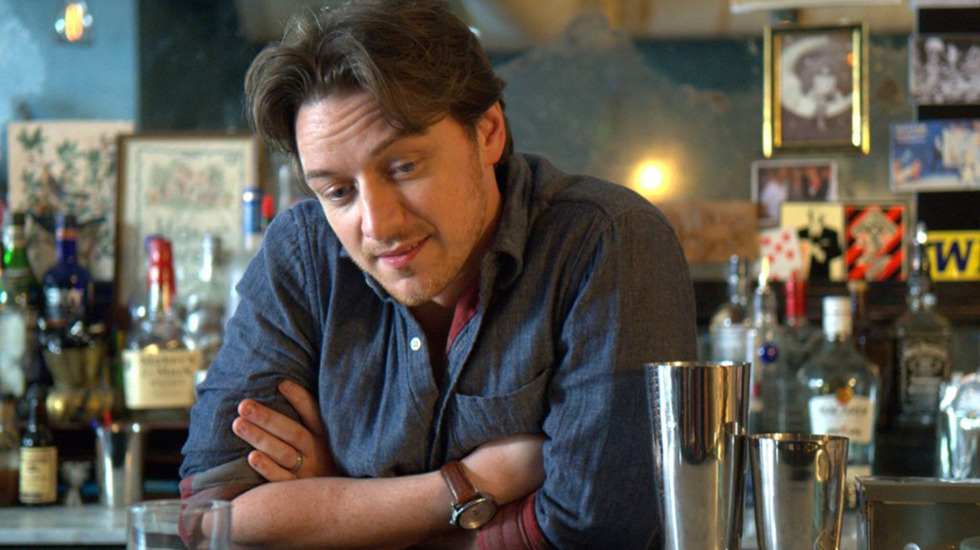
BY ZACHARY WIGON |
Ned Benson's Three-Film Experiment: 'The Disappearance of Eleanor Rigby'
A high-profile indie release that demonstrates innovation in cinema is very much alive.

All too often, the idea of innovation in contemporary cinema is relegated to the sidelines, viewed as ultimately avant-garde or unsure of itself - the manner in which transmedia filmmaking is still viewed as experimental is a case in point. The same can't be said for Ned Benson's debut opus, The Disappearance of Eleanor Rigby, which opens this month in a whopping three-film iteration. The film tracks the troubles faced by a married couple (James McAvoy and Jessica Chastian, both in standout performances) in the wake of a domestic tragedy - the recent death of their young child.
Not content to simply tell the story from one perspective, Benson instead initially set about making two films to tell the story: Him, which presents things from McAvoy's perspective, and Her, which is focused on how Chastain's character processes the situation. After being acquired by The Weinstein Company, Benson worked to create a third film, Them, which synthesizes material from both films into a film with a more omniscient point of view. I had the pleasure of speaking with Benson recently about his unusual and exciting new project.
Tribeca Film: How did this three-film construct come about?
Ned Benson: I wrote the first part of the story, which was Him, and then I brought it to Jessica Chastain, who started asking questions about Eleanor's character. That opened up the idea of showing two different perspectives on the central relationship, and I thought, what's the best way to show those different perspectives, and so I had the idea to do two films, one from each character's perspective. That's the movie we set out to make. It got made after a long struggle. The third film came about because after The Weinstein Company picked up the film we thought about the idea of an omnipotent perspective on the film, the idea of giving the audience the chance to see the entire project. So you could have the two-film character studies, or the third film, which shows an omnipotent perspective about the stories of two people.
I wanted to make sure that I was creating nuances in terms of how people experience and remember moments differently.
Tribeca Film: Is there an ideal way to watch the films?
Ned Benson: It's really up to the audience. I don't think there's a right or wrong way to do it. If you're going to watch all three films, I think it's best to start with Them and then move to Her and Him, because Her and Him open the world up, they have subplots that aren't seen in Them. But it's really just about the audience creating their own experience with it.
Tribeca Film: So you started by writing Him, and then after you spoke with Jessica you developed Her. How did the writing of the two different scripts inform each other?
Ned Benson: I wrote Him, and essentially the character of Eleanor Rigby was a ghost character, she disappeared from his life. There were questions about what happened to her, and those spaces became scenes in the other script. Then there were scenes that overlapped, scenes where they met that were in both films, but I had to write them in a subtly different way to show the difference of perspective. I wanted to make sure that I was creating nuances in terms of how people experience and remember moments differently.
Tribeca Film: That's really interesting. Subjectivity is so specific and differs so much. What was it like to do that work?
Ned Benson: It was really interesting. The point I wanted to make was, you know, you and I are having this conversation right now, and we're going to get off the phone, and we're each going to have different experiences of what this conversation was. I wanted to do the same things in the films. Maybe they both said "I love you" in a scene, but each of them remembered it differently, they took different things from that moment. I wanted to also accentuate the differences with different color palettes and camera work. I didn't want to be vastly different because that didn't seem real, but I think there are subtle differences in how we all experience the same moments.
Tribeca Film: There are also a number of flashbacks employed throughout the film. How do you approach using flashbacks? They're worked into the narrative really organically.
Ned Benson: I wanted to be as subtle as possible. I wanted to avoid that heavy-handed quality that tells you something is a flashback. I wanted to feel like we were slipping into a moment that we weren't sure if it was the present or the past. There can be subtle visual cues, like a haircut or how the characters are dressed. I think that's more interesting than defining things too heavily. I'd rather give the audience clues to make assumptions or inferences.
Maybe they both said "I love you" in a scene, but each of them remembered it differently, they took different things from that moment.
Tribeca Film: Christopher Blauvelt is a really talented DP, and you mentioned that you employed different looks for the different films. How did that process happen?
Ned Benson: Chris was phenomenal. We only started working together a few weeks before we started shooting, which was crazy. I had shotlisted the film before he came on, and after he did we sat down and went through it together, we found something between the two of us that we were happy with, we looked through some visual ideas for what we wanted. I wanted Him to have a cooler look, a more fluid look, because he's more detached from his emotions, and he feels like he has to keep moving, otherwise he's going to feel something. For Her, I created a warmer space that was looser, more emotional, which echoed her emotional situation. We shot more handheld for her scenes. When there was a crossover between the two of them we were able to introduce new elements into each of their films - like when she walks into his film, for example, we loosened the camera, used some handheld camera. We stuck pretty steadfastly to these ideas. When I put together Them, I used the separate color palettes to create disparate emotional spaces for the two of them. I wanted to feel like they were in separate emotional spaces in the same film, but then we used color timing to make the spaces feel more neutral as the film goes on, to convey that they're finding a common language again.
Tribeca Film: How did the casting of the film come together?
Ned Benson: We had Jessica involved from the beginning - Jessica, my producer and Jessica's friend Jess Weixler, who plays her sister. We spent years trying to put this together, to no avail. Even as Jessica's career took off it didn't bring financing in, because I was a first-timer trying to do something different, and that was terrifying to people, which I understand. We had had an actor to play Conor, but he had to drop out. I had gone to James McAvoy with it earlier, but he had just had a son and couldn't deal with the subject matter. So about two months before we had to start shooting, because this other actor had a scheduling conflict, we went back to James and he said yes. That locked our financing in. Jessica was about to commit to another film that was in our shooting window, and I had to rush and explain to her agents that this was really happening, the financing was finally really in place.
When I put together Them, I used the separate color palettes to create disparate emotional spaces for the two of them.
Tribeca Film: You know, the vast majority of what one hears in indie film is about how dire the situation is for ambitious dramas made for real budgets. Can you speak to the business realities of the environment, from your perspective, as you've done something quite different with this project?
Ned Benson: We were trying to do something different, but I don't think we were consciously trying to be radical. We thought it was different and we hoped it was different enough to make it interesting. Of course, most people were terrified of it. From writing, it took eight years to get to the first day of production. Making movies in general is hard, so this is a bit of a miracle. I think it was delusion and stubbornness that got the movie made, and the fact that I had two partners - a producer and an actress - who really stuck with the project because they believed in what we were trying to do. It's exciting that we've had The Weinstein Company get behind us and be into distributing all three films. It was really difficult to put it together, however, and there was so much luck involved. I think that's what filmmaking is these days - a combination of stubbornness, delusion and luck. I hope the fact that it was picked up helps filmmakers like myself who are trying to do stuff that's a bit more experimental.

